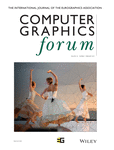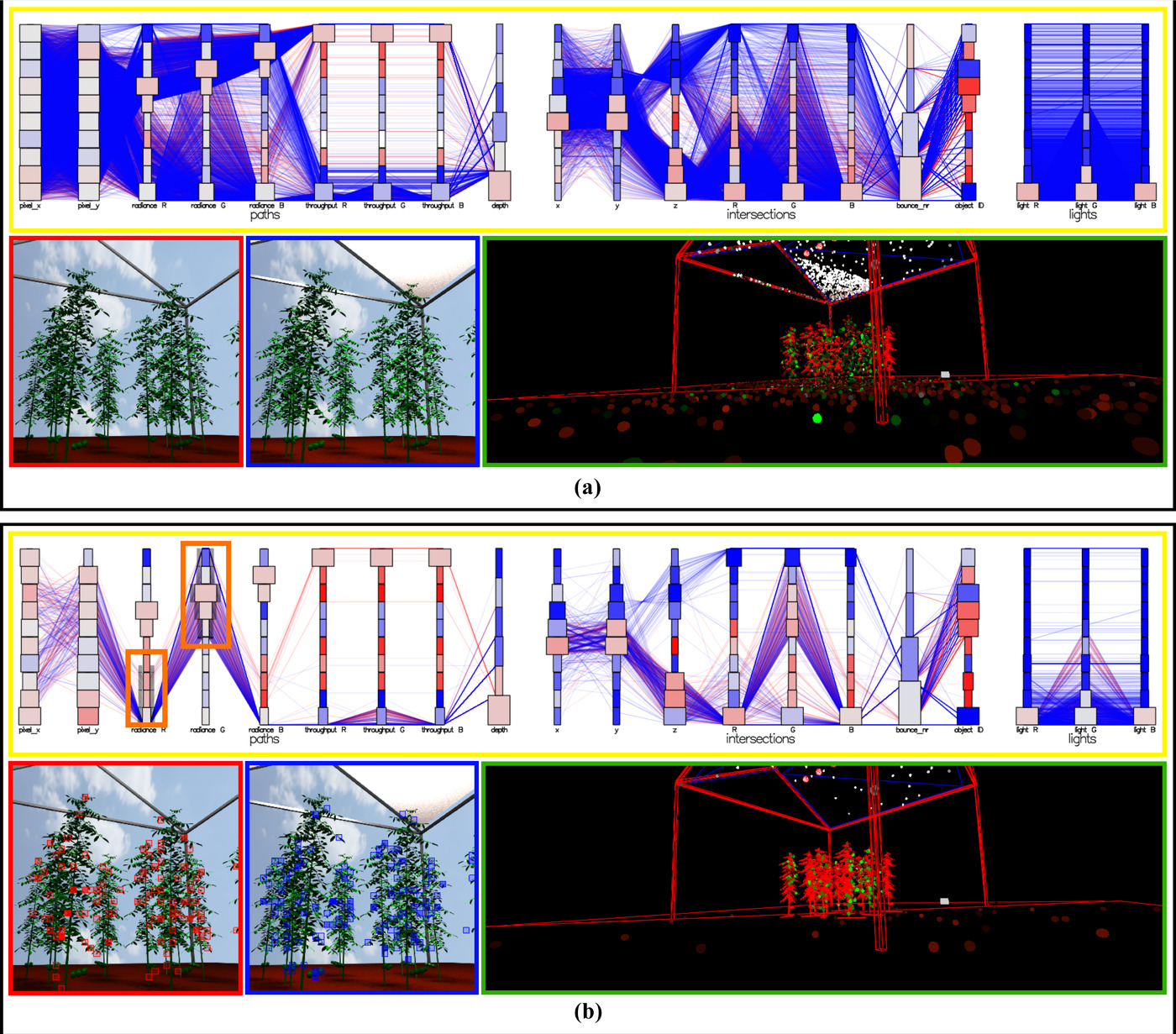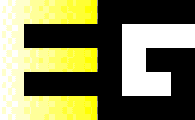Journal list menu
Export Citations
Download PDFs
Issue Information
Editorial
Articles
Robust Structure-Based Shape Correspondence
- Pages: 7-20
- First Published: 06 April 2018
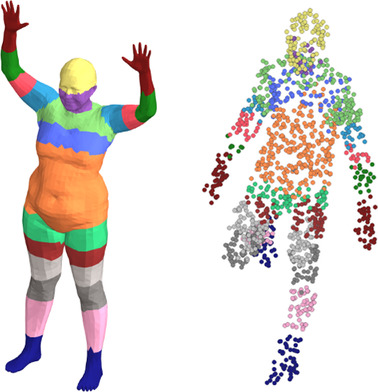
We present a robust method to find region-level correspondences between shapes, which are invariant to changes in geometry and applicable across multiple shape representations. We generate simplified shape graphs by jointly decomposing the shapes, and devise an adapted graph-matching technique, from which we infer correspondences between shape regions. The simplified shape graphs are designed to primarily capture the overall structure of the shapes, without reflecting precise information about the geometry of each region, which enables us to find correspondences between shapes that might have significant geometric differences. Moreover, due to the special care we take to ensure the robustness of each part of our pipeline, our method can find correspondences between shapes with different representations, such as triangular meshes and point clouds.
A Survey on 3D Virtual Object Manipulation: From the Desktop to Immersive Virtual Environments
- Pages: 21-45
- First Published: 14 April 2018

Interactions within virtual environments often require manipulating 3D virtual objects. We survey the state-of-the-art in 3D object manipulation, ranging from traditional desktop approaches to touch and mid-air interfaces, to interact in diverse virtual environments. We propose a new taxonomy to better classify manipulation properties. Using our taxonomy, we discuss the techniques presented in the surveyed literature, highlighting trends, guidelines and open challenges, that can be useful both to future research and to developers of 3D user interfaces.
VisFM: Visual Analysis of Image Feature Matchings
- Pages: 46-58
- First Published: 30 March 2018
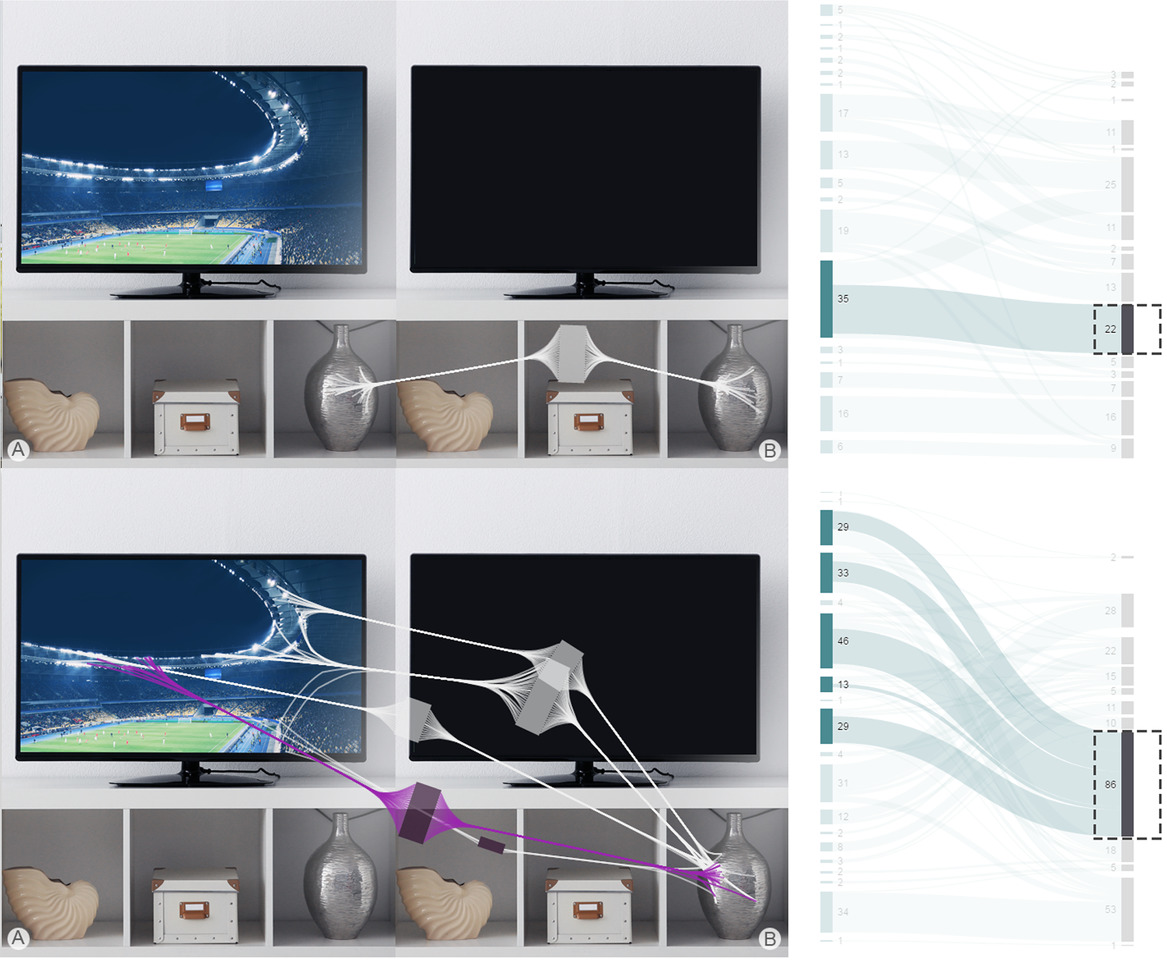
Feature matching is the most basic and pervasive problem in computer vision and it has become a primary component in big data analytics. Many tools have been developed for extracting and matching features in video streams and image frames. However, one of the most basic tools, that is, a tool for simply visualizing matched features for the comparison and evaluation of computer vision algorithms is not generally available, especially when dealing with a large number of matching lines. We introduce VisFM, an integrated visual analysis system for comprehending and exploring image feature matchings. VisFM presents a matching view with an intuitive line bundling to provide useful insights regarding the quality of matched features. VisFM is capable of showing a summarization of the features and matchings through group view to assist domain experts in observing the feature matching patterns from multiple perspectives.
Optimal Sample Weights for Hemispherical Integral Quadratures
- Pages: 59-72
- First Published: 10 April 2018
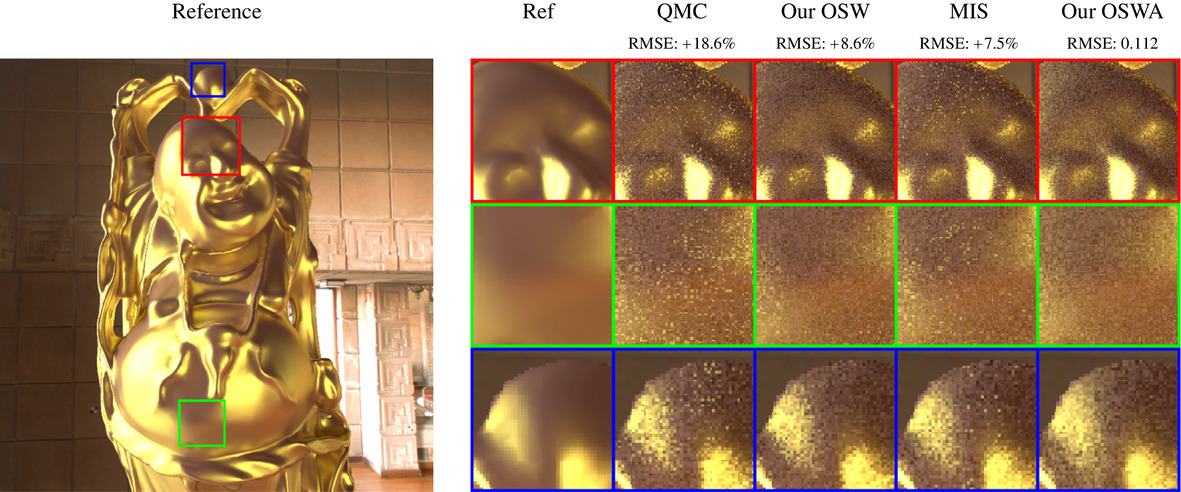
This paper proposes optimal quadrature rules over the hemisphere for the shading integral. We leverage recent work regarding the theory of quadrature rules over the sphere in order to derive a new theoretical framework for the general case of hemispherical quadrature error analysis. We then apply our framework to the case of the shading integral. We show that our quadrature error theory can be used to derive optimal sample weights (OSW) which account for both the features of the sampling pattern and the material reflectance function (BRDF). Our method significantly outperforms familiar Quasi Monte Carlo (QMC) and stochastic Monte Carlo techniques. Our results show that the OSW are very effective in compensating for possible irregularities in the sample distribution. This allows, for example, to significantly exceed the regular  convergence rate of stochastic Monte Carlo while keeping the exact same sample sets.
convergence rate of stochastic Monte Carlo while keeping the exact same sample sets.
Turning a Digital Camera into an Absolute 2D Tele-Colorimeter
- Pages: 73-86
- First Published: 10 April 2018

We present a simple and effective technique for absolute colorimetric camera characterization, invariant to changes in exposure/aperture and scene irradiance, suitable in a wide range of applications including image-based reflectance measurements, spectral pre-filtering and spectral upsampling for rendering, to improve colour accuracy in high dynamic range imaging. Our method requires a limited number of acquisitions, an off-the-shelf target and a commonly available projector, used as a controllable light source, other than the reflected radiance to be known. The characterized camera can be effectively used as a 2D tele-colorimeter, providing the user with an accurate estimate of the distribution of luminance and chromaticity in a scene, without requiring explicit knowledge of the incident lighting power spectra.
Generation and Visual Exploration of Medical Flow Data: Survey, Research Trends and Future Challenges
- Pages: 87-125
- First Published: 07 May 2018
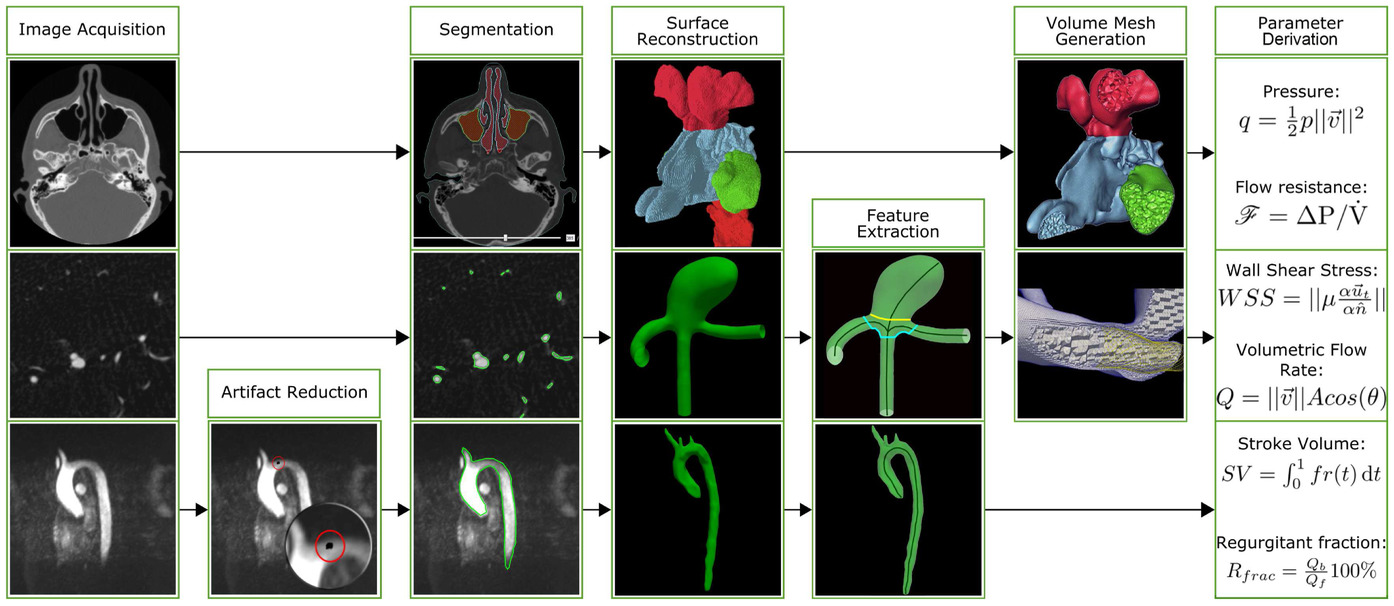
Simulations and measurements of blood and airflow inside the human circulatory and respiratory system play an increasingly important role in personalized medicine for prevention, diagnosis and treatment of diseases. This survey focuses on three main application areas. (1) Computational fluid dynamics (CFD) simulations of blood flow in cerebral aneurysms assist in predicting the outcome of this pathologic process and of therapeutic interventions. (2) CFD simulations of nasal airflow allow for investigating the effects of obstructions and deformities and provide therapy decision support. (3) 4D phase-contrast (4D PC) magnetic resonance imaging of aortic haemodynamics supports the diagnosis of various vascular and valve pathologies as well as their treatment. An investigation of the complex and often dynamic simulation and measurement data requires the coupling of sophisticated visualization, interaction and data analysis techniques.
FitConnect: Connecting Noisy 2D Samples by Fitted Neighbourhoods
- Pages: 126-137
- First Published: 11 May 2018

We propose a parameter-free method to recover manifold connectivity in unstructured 2D point clouds with high noise in terms of the local feature size. This enables us to capture the features which emerge out of the noise. To achieve this, we extend the reconstruction algorithm HNN-Crust, which connects samples to two (noise-free) neighbours and has been proven to output a manifold for a relaxed sampling condition. Applying this condition to noisy samples by projecting their k-nearest neighbourhoods onto local circular fits leads to multiple candidate neighbour pairs and thus makes connecting them consistently an NP-hard problem. To solve this efficiently, we design an algorithm that searches that solution space iteratively on different scales of k. It achieves linear time complexity in terms of point count plus quadratic time in the size of noise clusters.
An Adaptive Multi-Grid Solver for Applications in Computer Graphics
- Pages: 138-150
- First Published: 15 May 2018
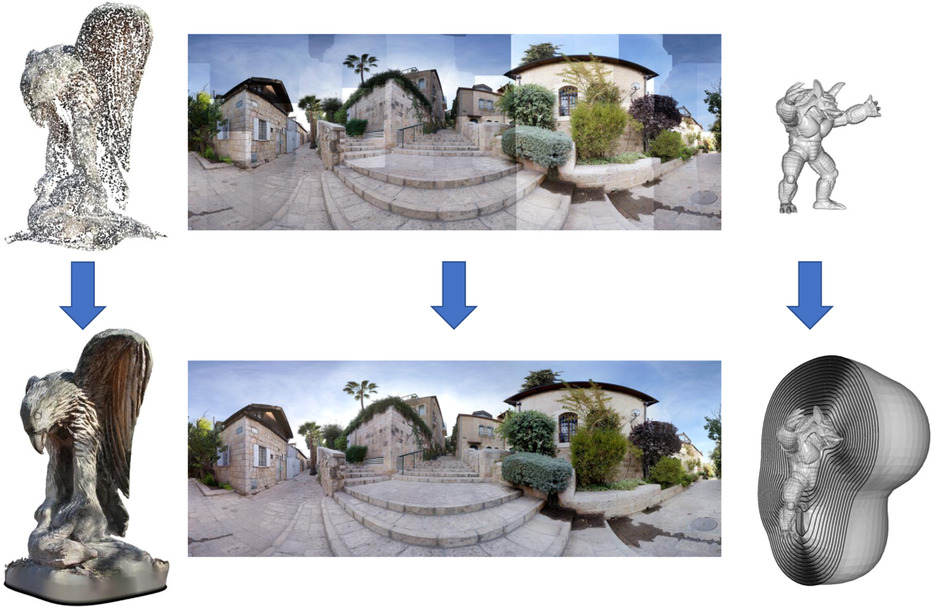
A key processing step in numerous computer graphics applications is the solution of a linear system discretized over a spatial domain. Often, the linear system can be represented using an adaptive domain tessellation, either because the solution will only be sampled sparsely, or because the solution is known to be ‘interesting’ (e.g. high frequency) only in localized regions. In this work, we propose an adaptive, finite elements, multi-grid solver capable of efficiently solving such linear systems. Our solver is designed to be general-purpose, supporting finite elements of different degrees, across different dimensions and supporting both integrated and pointwise constraints.
Realtime Performance-Driven Physical Simulation for Facial Animation
- Pages: 151-166
- First Published: 11 June 2018

We present the first realtime method for generating facial animations enhanced by physical simulation from realtime performance capture data. Unlike purely data-based techniques, our method is able to produce physical effects on the fly through the simulation of volumetric skin behaviour, lip contacts and sticky lips. It remains however practical as it does not require any physical/medical data which are complex to acquire and process, and instead relies only on the input of a blendshapes model. We achieve realtime performance on the CPU by introducing an efficient progressive Projective Dynamics solver to efficiently solve the physical integration steps even when confronted to constantly changing constraints. Also key to our realtime performance is a new Taylor approximation and memoization scheme for the computation of the Singular Value Decompositions required for the simulation of volumetric skin. We demonstrate the applicability of our method by animating blendshape characters from a simple webcam feed.
A Survey of Simple Geometric Primitives Detection Methods for Captured 3D Data
- Pages: 167-196
- First Published: 04 July 2018
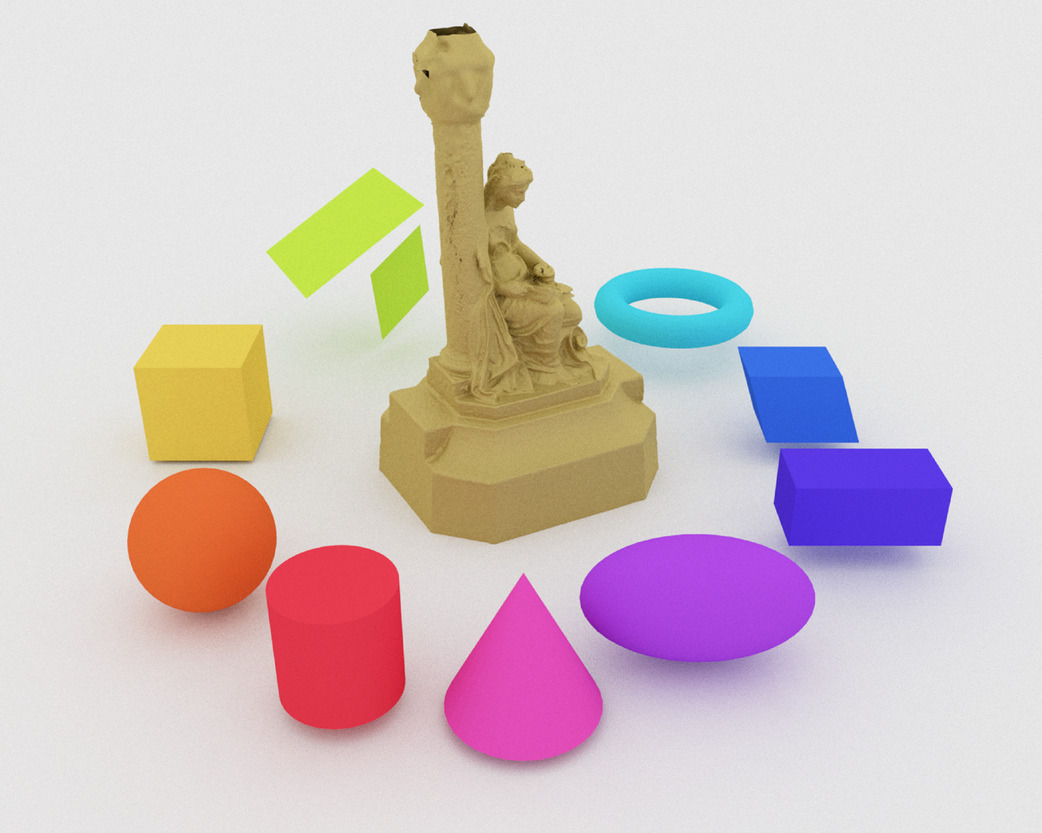
The analysis and representation of the increasing amount of captured 3D data, often corrupted with noise and artifacts, requires crucial components of the shape abstraction process, which can be simplified when performed on lightened geometric formats. In this survey, we review the algorithms which extract simple geometric primitives from raw dense 3D data. After giving an introduction to these techniques, we propose an application-oriented characterization, designed to help select a method based on one's application needs, and compare recent approaches.
Applying Visual Analytics to Physically Based Rendering
- Pages: 197-208
- First Published: 04 July 2018
Visualization of Neural Network Predictions for Weather Forecasting
- Pages: 209-220
- First Published: 29 June 2018
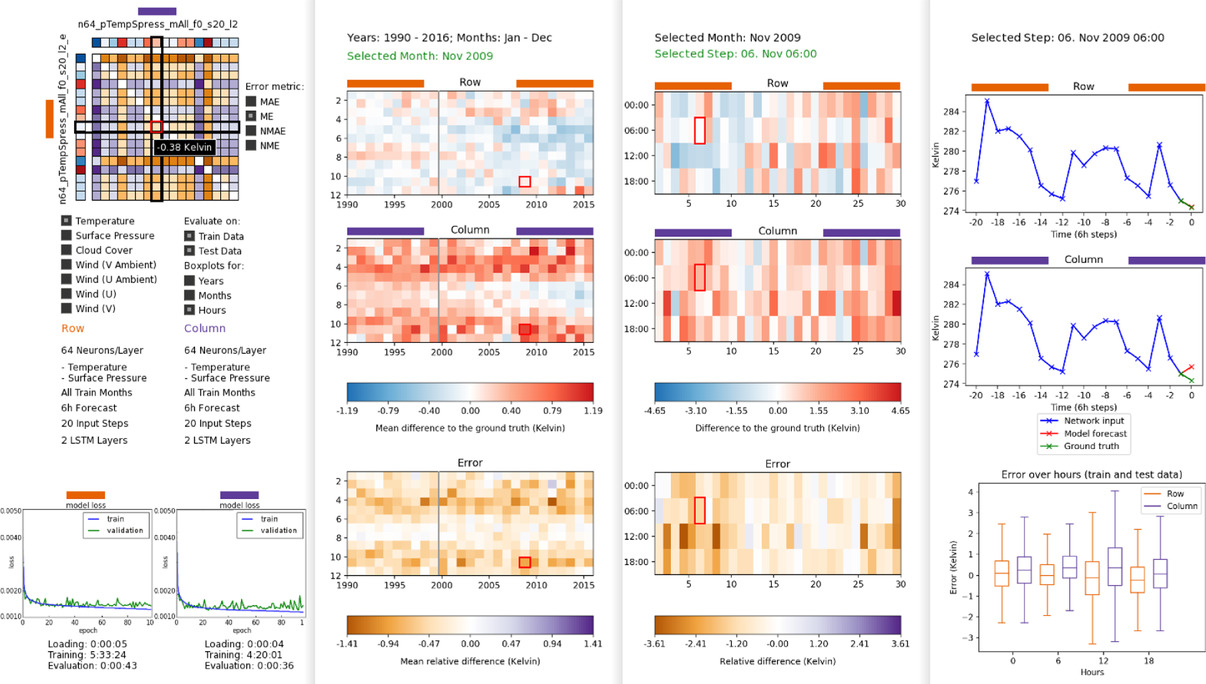
Recurrent neural networks are prime candidates for learning evolutions in multi-dimensional time series data. We describe a comprehensive and interactive system to visually analyse and compare time series predictions that were generated by convolutional and recurrent neural networks in the context of weather forecasting.
Stylized Image Triangulation
- Pages: 221-234
- First Published: 18 July 2018
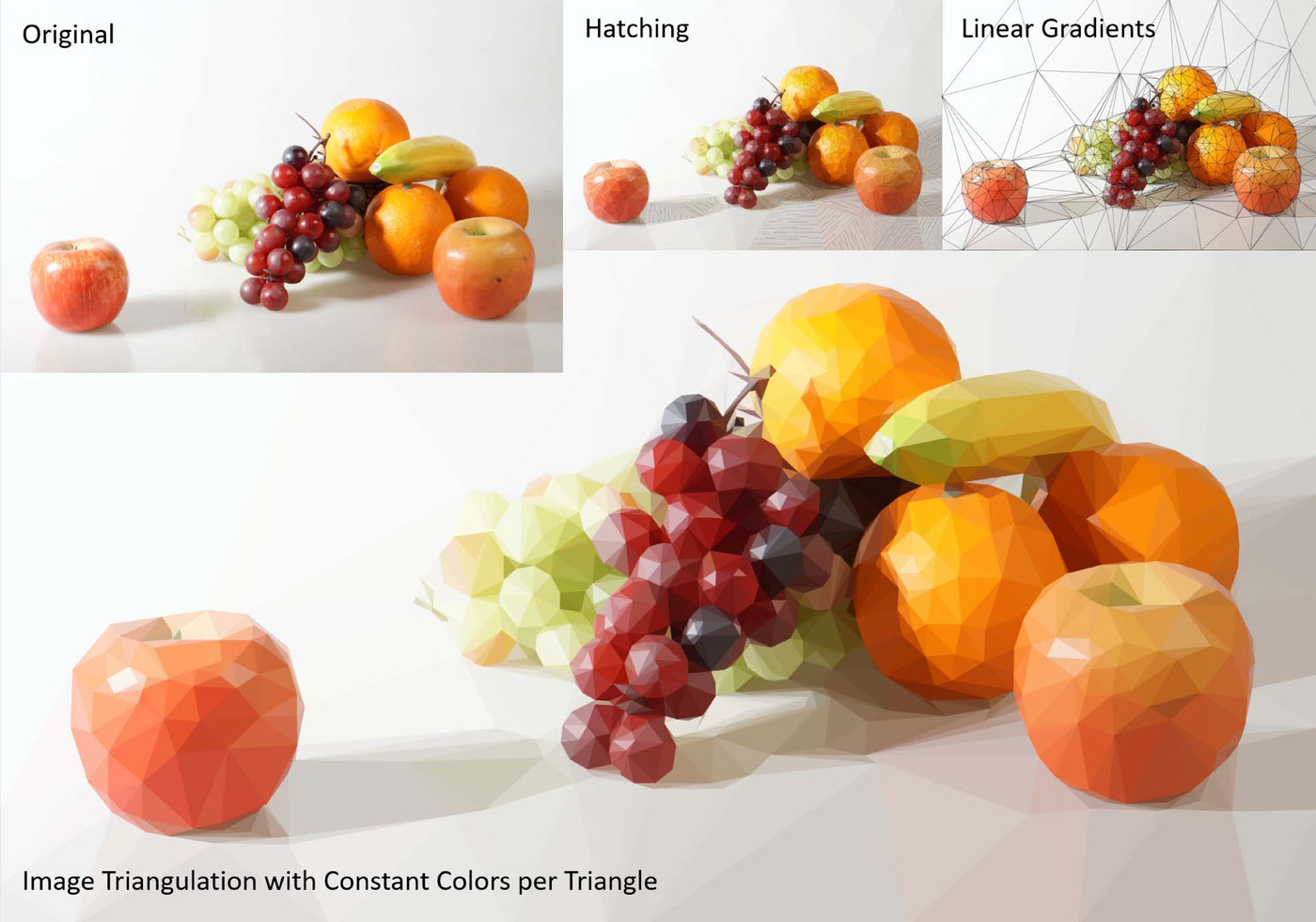
The art of representing images with triangles is known as image triangulation, which purposefully uses abstraction and simplification to guide the viewer's attention. The manual creation of image triangulations is tedious and thus several tools have been developed in the past that assist in the placement of vertices by means of image feature detection and subsequent Delaunay triangulation. In this paper, we formulate the image triangulation process as an optimization problem. We provide an interactive system that optimizes the vertex locations of an image triangulation to reduce the root mean squared approximation error. Along the way, the triangulation is incrementally refined by splitting triangles until certain refinement criteria are met.
MegaViews: Scalable Many-View Rendering With Concurrent Scene-View Hierarchy Traversal
- Pages: 235-247
- First Published: 12 July 2018

We present a scalable solution to render complex scenes from a large amount of viewpoints. While previous approaches rely either on a scene or a view hierarchy to process multiple elements together, we make full use of both, enabling sublinear performance in terms of views and scene complexity. By concurrently traversing the hierarchies, we efficiently find shared information among views to amortize rendering costs. One example application is many-light global illumination. Our solution accelerates shadow map generation for virtual point lights, whose number can now be raised to over a million while maintaining interactive rates.
Autonomous Particles for Interactive Flow Visualization
- Pages: 248-259
- First Published: 10 August 2018
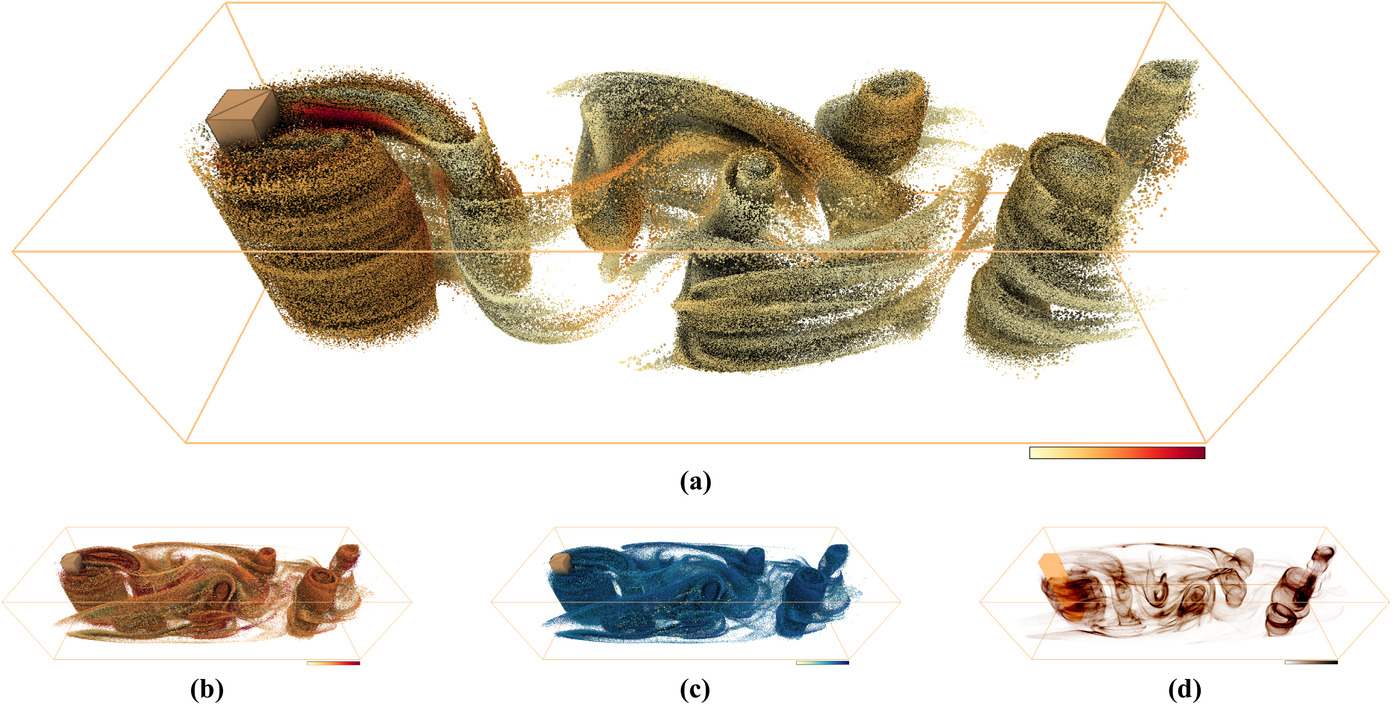
We present an interactive approach to analyse flow fields using a new type of particle system, which is composed of autonomous particles exploring the flow. While particles provide a very intuitive way to visualize flows, it is a challenge to capture the important features with such systems. Particles tend to cluster in regions of low velocity and regions of interest are often sparsely populated. To overcome these disadvantages, we propose an automatic adaption of the particle density with respect to local importance measures. These measures are user defined and the systems sensitivity to them can be adjusted interactively. Together with the particle history, these measures define a probability for particles to multiply or die, respectively. There is no communication between the particles and no neighbourhood information has to be maintained. Thus, the particles can be handled in parallel and support a real-time investigation of flow fields. To enhance the visualization, the particles' properties and selected field measures are also used to specify the systems rendering parameters, such as colour and size. We demonstrate the effectiveness of our approach on different simulated vector fields from technical and medical applications.
Flexible Use of Temporal and Spatial Reasoning for Fast and Scalable CPU Broad-Phase Collision Detection Using KD-Trees
- Pages: 260-273
- First Published: 29 July 2018
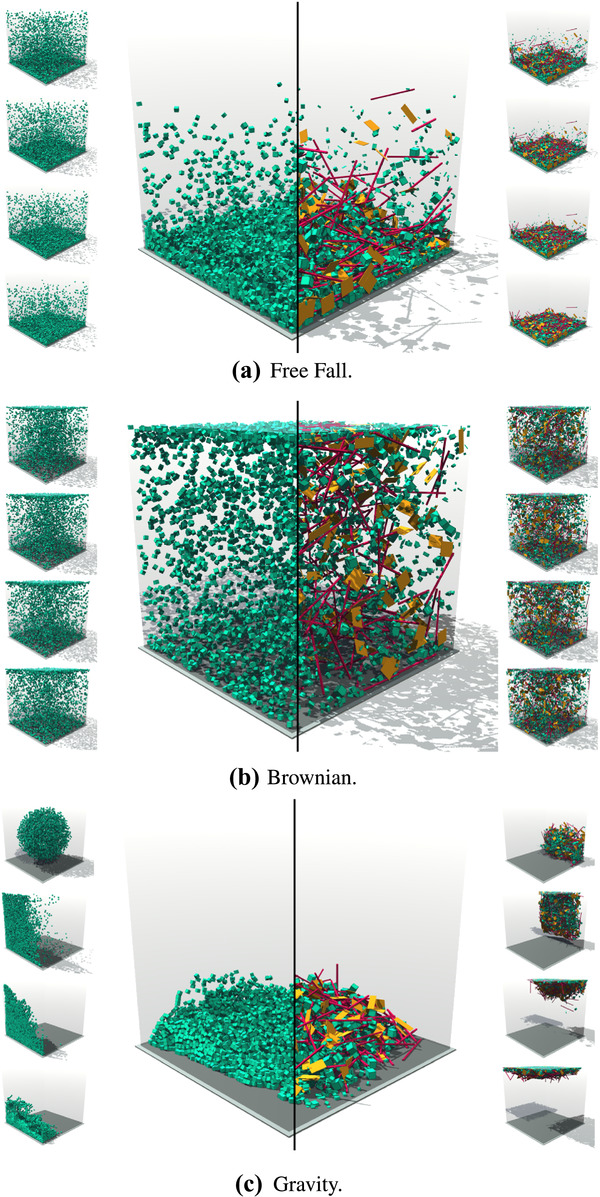
Realistic computer simulations of physical elements such as rigid and deformable bodies, particles and fractures are commonplace in the modern world. In these simulations, the broad-phase collision detection plays an important role in ensuring that simulations can scale with the number of objects. In these applications, several degrees of motion coherency, distinct spatial distributions and different types of objects exist; however, few attempts have been made at a generally applicable solution for their broad phase. In this regard, this work presents a novel broad-phase collision detection algorithm based upon a hybrid SIMD optimized KD-Tree and sweep-and-prune, aimed at general applicability. Our solution is optimized for several objects distributions, degrees of motion coherence and varying object sizes. These features are made possible by an efficient and idempotent two-step tree optimization algorithm and by selectively enabling coherency optimizations.
Controllable Image-Based Transfer of Flow Phenomena
- Pages: 274-285
- First Published: 26 July 2018

Modelling flow phenomena and their related weathering effects is often cumbersome due their dependence on the environment, materials, and geometric properties of objects in the scene. Example-based modelling provides many advantages for reproducing real textures, but little effort has been devoted to reproducing and transferring complex phenomena. In order to produce realistic flow effects, it is possible to take advantage of the widespread availability of flow images on the Internet, which can be used to gather key information about the flow. In this paper, we present a technique that allows the transfer of flow phenomena between photographs, adapting the flow to the target image and giving the user flexibility and control through specifically tailored parameters. This is done through two types of control curves: a fitted theoretical curve to control the mass of deposited material, and an extended colour map for properly adapting to the target appearance.
Projected Field Similarity for Comparative Visualization of Multi-Run Multi-Field Time-Varying Spatial Data
- Pages: 286-299
- First Published: 10 August 2018
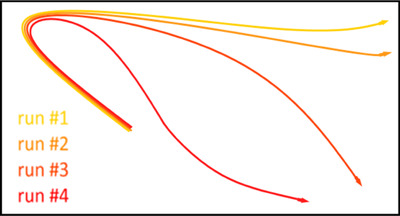
The purpose of multi-run simulations is often to capture the variability of the output with respect to different initial settings. Comparative analysis of multi-run spatio-temporal simulation data requires us to investigate the differences in the dynamics of the simulations' changes over time. To capture the changes and differences, aggregated statistical information may often be insufficient, and it is desirable to capture the local differences between spatial data fields at different times and between different runs. To calculate the pairwise similarity between data fields, we generalize the concept of isosurface similarity from individual surfaces to entire fields and propose efficient computation strategies. The described approach can be applied considering a single scalar field for all simulation runs or can be generalized to a similarity measure capturing all data fields of a multi-field data set simultaneously.
On Visualizing Continuous Turbulence Scales
- Pages: 300-315
- First Published: 06 August 2018
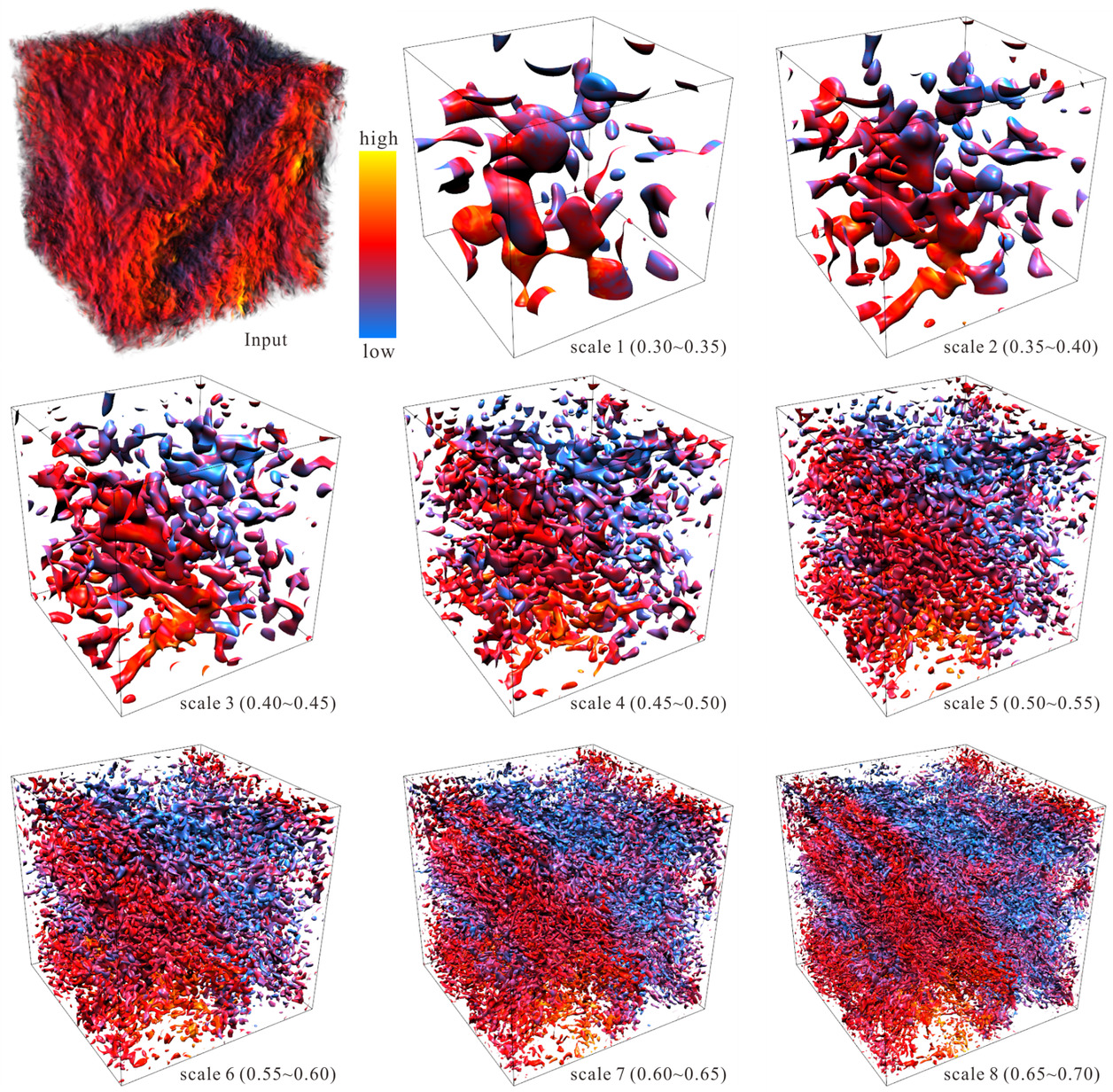
Turbulent flows are multi-scale with vortices spanning a wide range of scales continuously. Due to such complexities, turbulence scales are particularly difficult to analyse and visualize. In this work, we present a novel and efficient optimization-based method for continuous-scale turbulence structure visualization with scale decomposition directly in the Kolmogorov energy spectrum. To achieve this, we first derive a new analytical objective function based on integration approximation. Using this new formulation, we can significantly improve the efficiency of the underlying optimization process and obtain the desired filter in the Kolmogorov energy spectrum for scale decomposition. More importantly, such a decomposition allows a ‘continuous-scale visualization’ that enables us to efficiently explore the decomposed turbulence scales and further analyse the turbulence structures in a continuous manner. With our approach, we can present scale visualizations of direct numerical simulation data sets continuously over the scale domain for both isotropic and boundary layer turbulent flows.
Denoising Deep Monte Carlo Renderings
- Pages: 316-327
- First Published: 27 August 2018

We present a novel algorithm to denoise deep Monte Carlo renderings, in which pixels contain multiple color values, each for a different range of depths. Our algorithm combines a flat image-space Non-Local Means filter operating on pixel colors with a deep cross-bilateral filter operating on auxiliary features (albedo, normal, etc.) of individual depth bins. Our approach significantly reduces noise in deep images while preserving their structure and enables efficient deep-compositing workflows with denoised Monte Carlo renderings.
TexNN: Fast Texture Encoding Using Neural Networks
- Pages: 328-339
- First Published: 09 August 2018

We present a novel deep learning-based method for fast encoding of textures into current texture compression formats. Our approach uses state-of-the-art neural network methods to compute the appropriate encoding configurations for fast compression. A key bottleneck in the current encoding algorithms is the search step, and we reduce that computation to a classification problem. We use a trained neural network approximation to quickly compute the encoding configuration for a given texture.
We have evaluated our approach for compressing the textures for the widely used adaptive scalable texture compression format and evaluate the performance for different block sizes corresponding to 4 × 4, 6 × 6 and 8 × 8.
Privacy Preserving Visualization: A Study on Event Sequence Data
- Pages: 340-355
- First Published: 27 August 2018
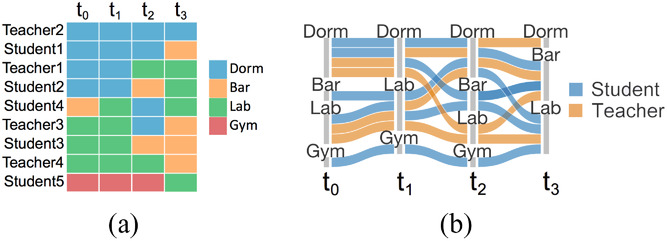
The inconceivable ability and common practice to collect personal data as well as the power of data-driven approaches to businesses, services and security nowadays also introduce significant privacy issues. There have been extensive studies on addressing privacy preserving problems in the data mining community but relatively few have provided supervised control over the anonymization process. Preserving both the value and privacy of the data is largely a non-trivial task. We present the design and evaluation of a visual interface that assists users in employing commonly used data anonymization techniques for making privacy preserving visualizations. Specifically, we focus on event sequence data due to its vulnerability to privacy concerns. Our interface is designed for data owners to examine potential privacy issues, obfuscate information as suggested by the algorithm and fine-tune the results per their discretion.
A Survey on Data-Driven 3D Shape Descriptors
- Pages: 356-393
- First Published: 01 September 2018
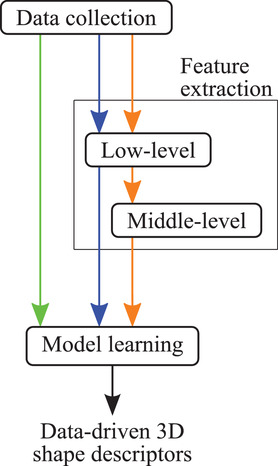
Recent advances in scanning device technologies and improvements in techniques that generate and synthesize 3D shapes have made 3D models widespread in various fields including medical research, biology, engineering, etc. 3D shape descriptors play a fundamental role in many 3D shape analysis tasks such as point matching, establishing point-to-point correspondence, shape segmentation and labelling, and shape retrieval to name a few. Various methods have been proposed to calculate succinct and informative descriptors for 3D models. Emerging data-driven techniques use machine learning algorithms to construct accurate and reliable shape descriptors.
Gradient-Guided Local Disparity Editing
- Pages: 394-404
- First Published: 06 September 2018

Stereoscopic 3D technology gives visual content creators a new dimension of design when creating images and movies. While useful for conveying emotion, laying emphasis on certain parts of the scene, or guiding the viewer's attention, editing stereo content is a challenging task. Not respecting comfort zones or adding incorrect depth cues, for example depth inversion, leads to a poor viewing experience. In this paper, we present a solution for editing stereoscopic content that allows an artist to impose disparity constraints and removes resulting depth conflicts using an optimization scheme. Using our approach, an artist only needs to focus on important high-level indications that are automatically made consistent with the entire scene while avoiding contradictory depth cues and respecting viewer comfort.
Superpixel Generation by Agglomerative Clustering With Quadratic Error Minimization
- Pages: 405-416
- First Published: 08 September 2018

Superpixel segmentation is a popular image pre-processing technique in many computer vision applications. In this paper, we present a novel superpixel generation algorithm by agglomerative clustering with quadratic error minimization. We use a quadratic error metric (QEM) to measure the difference of spatial compactness and colour homogeneity between superpixels. Based on the quadratic function, we propose a bottom-up greedy clustering algorithm to obtain higher quality superpixel segmentation. There are two steps in our algorithm: merging and swapping. First, we calculate the merging cost of two superpixels and iteratively merge the pair with the minimum cost until the termination condition is satisfied. Then, we optimize the boundary of superpixels by swapping pixels according to their swapping cost to improve the compactness. Due to the quadratic nature of the energy function, each of these atomic operations has only O(1) time complexity. We compare the new method with other state-of-the-art superpixel generation algorithms on two datasets, and our algorithm demonstrates superior performance.
Shading-Based Surface Recovery Using Subdivision-Based Representation
- Pages: 417-428
- First Published: 20 September 2018
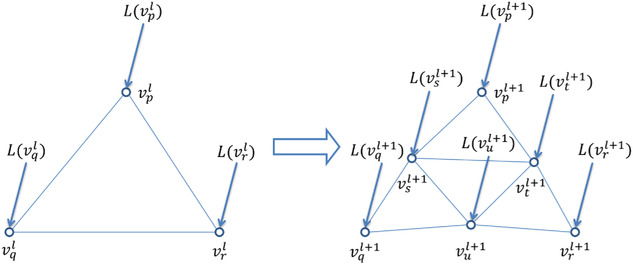
This paper presents subdivision-based representations for both lighting and geometry in shape-from-shading. A very recent shading-based method introduced a per-vertex overall illumination model for surface reconstruction, which has advantage of conveniently handling complicated lighting condition and avoiding explicit estimation of visibility and varied albedo. However, due to its discrete nature, the per-vertex overall illumination requires a large amount of memory and lacks intrinsic coherence. To overcome these problems, in this paper we propose to use classic subdivision to define the basic smooth lighting function and surface, and introduce additional independent variables into the subdivision to adaptively model sharp changes of illumination and geometry. Compared to previous works, the new model not only preserves the merits of the per-vertex illumination model, but also greatly reduces the number of variables required in surface recovery and intrinsically regularizes the illumination vectors and the surface. These features make the new model very suitable for multi-view stereo surface reconstruction under general, unknown illumination condition. Particularly, a variational surface reconstruction method built upon the subdivision representations for lighting and geometry is developed. The experiments on both synthetic and real-world data sets have demonstrated that the proposed method can achieve memory efficiency and improve surface detail recovery.
Learning A Stroke-Based Representation for Fonts
- Pages: 429-442
- First Published: 05 October 2018

Designing fonts and typefaces is a difficult process for both beginner and expert typographers. Existing workflows require the designer to create every glyph, while adhering to many loosely defined design suggestions to achieve an aesthetically appealing and coherent character set. This process can be significantly simplified by exploiting the similar structure character glyphs present across different fonts and the shared stylistic elements within the same font. To capture these correlations, we propose learning a stroke-based font representation from a collection of existing typefaces. To enable this, we develop a stroke-based geometric model for glyphs, a fitting procedure to reparametrize arbitrary fonts to our representation. We demonstrate the effectiveness of our model through a manifold learning technique that estimates a low-dimensional font space. Our representation captures a wide range of everyday fonts with topological variations and naturally handles discrete and continuous variations, such as presence and absence of stylistic elements as well as slants and weights. We show that our learned representation can be used for iteratively improving fit quality, as well as exploratory style applications such as completing a font from a subset of observed glyphs, interpolating or adding and removing stylistic elements in existing fonts.
Real-Time Human Shadow Removal in a Front Projection System
- Pages: 443-454
- First Published: 01 October 2018

When a person is located between a display and an operating projector, a shadow is cast on the display. The shadow on the display may eliminate important visual information and therefore adversely affect the viewing experiences. There have been various attempts to remove the human shadow cast on a projection display by using multiple projectors. While previous approaches successfully removed the shadow region when a person moderately moves around or stands stationary in front of the display, there is still an afterimage effect due to the lack of consideration of the limb motion of the person. We propose a new real-time approach to removing the shadow cast by a person who dynamically interacts with the display, making limb motions in a front projection system. The proposed method utilizes a human skeleton obtained from a depth camera to track the posture of the person which changes over time.
Urban Walkability Design Using Virtual Population Simulation
- Pages: 455-469
- First Published: 08 October 2018

We present a system to generate a procedural environment that produces a desired crowd behaviour. Instead of altering the behavioural parameters of the crowd itself, we automatically alter the environment to yield such desired crowd behaviour. This novel inverse approach is useful both to crowd simulation in virtual environments and to urban crowd planning applications. Our approach tightly integrates and extends a space discretization crowd simulator with inverse procedural modelling. We extend crowd simulation by goal exploration (i.e. agents are initially unaware of the goal locations), variable-appealing sign usage and several acceleration schemes. We use Markov chain Monte Carlo to quickly explore the solution space and yield interactive design. We have applied our method to a variety of virtual and real-world locations, yielding one order of magnitude faster crowd simulation performance over related methods and several fold improvement of crowd indicators.
Real-Time Facial Expression Transformation for Monocular RGB Video
- Pages: 470-481
- First Published: 10 October 2018
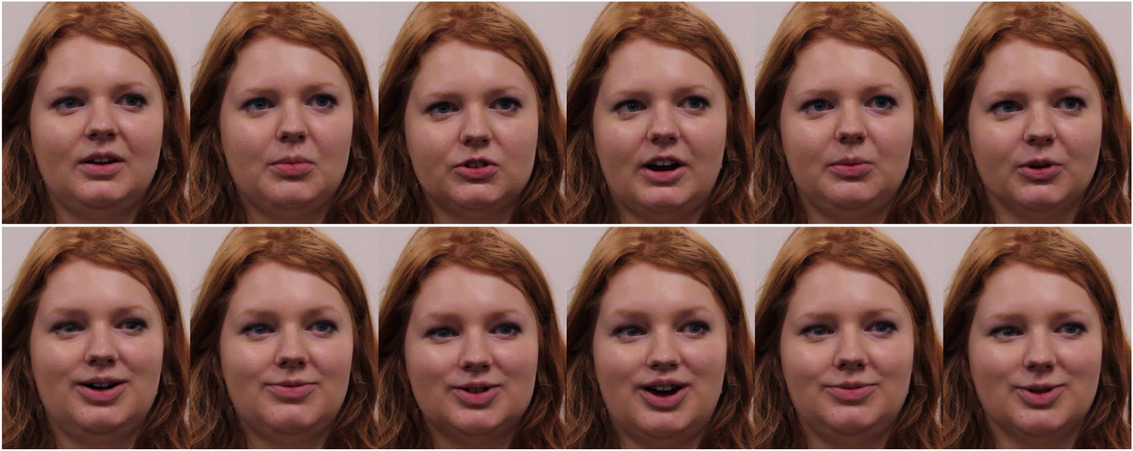
This paper describes a novel real-time end-to-end system for facial expression transformation, without the need of any driving source. Its core idea is to directly generate desired and photo-realistic facial expressions on top of input monocular RGB video. Specifically, an unpaired learning framework is developed to learn the mapping between any two facial expressions in the facial blendshape space. Then, it automatically transforms the source expression in an input video clip to a specified target expression through the combination of automated 3D face construction, the learned bi-directional expression mapping and automated lip correction. It can be applied to new users without additional training. Its effectiveness is demonstrated through many experiments on faces from live and online video, with different identities, ages, speeches and expressions.
A Variational Approach to Registration with Local Exponential Coordinates
- Pages: 482-506
- First Published: 25 October 2018

We identify a novel parameterization for the group of finite rotations (SO3), consisting of an atlas of exponential maps defined over local tangent planes, for the purpose of computing isometric transformations in registration problems that arise in machine vision applications. Together with a simple representation for translations, the resulting system of coordinates for rigid body motions is proper, free from singularities, is unrestricted in the magnitude of motions that can be represented and poses no difficulties in computer implementations despite their multi-chart nature. Crucially, such a parameterization helps to admit varied types of data sets, to adopt data-dependent error functionals for registration, seamlessly bridges correspondence and pose calculations, and inspires systematic variational procedures for computing optimal solutions. As a representative problem, we consider that of registering point clouds onto implicit surfaces without introducing any discretization of the latter. We derive coordinate-free stationarity conditions, compute consistent linearizations, provide algorithms to compute optimal solutions and examine their performance with detailed examples. The algorithm generalizes naturally to registering curves and surfaces onto implicit manifolds, is directly adaptable to handle the familiar problem of pairwise registration of point clouds and allows for incorporating scale factors during registration.
Visual Exploration of Dynamic Multichannel EEG Coherence Networks
- Pages: 507-520
- First Published: 05 November 2018
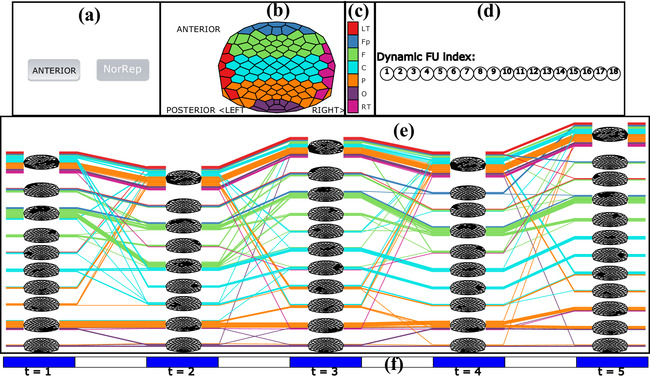
Electroencephalography (EEG) coherence networks represent functional brain connectivity, and are constructed by calculating the coherence between pairs of electrode signals as a function of frequency. Visualization of such networks can provide insight into unexpected patterns of cognitive processing and help neuroscientists to understand brain mechanisms. However, visualizing dynamic EEG coherence networks is a challenge for the analysis of brain connectivity, especially when the spatial structure of the network needs to be taken into account. In this paper, we present a design and implementation of a visualization framework for such dynamic networks. First, requirements for supporting typical tasks in the context of dynamic functional connectivity network analysis were collected from neuroscience researchers. In our design, we consider groups of network nodes and their corresponding spatial location for visualizing the evolution of the dynamic coherence network. We introduce an augmented timeline-based representation to provide an overview of the evolution of functional units (FUs) and their spatial location over time. This representation can help the viewer to identify relations between functional connectivity and brain regions, as well as to identify persistent or transient functional connectivity patterns across the whole time window. In addition, we introduce the time-annotated FU map representation to facilitate comparison of the behaviour of nodes between consecutive FU maps. A colour coding is designed that helps to distinguish distinct dynamic FUs. Our implementation also supports interactive exploration. The usefulness of our visualization design was evaluated by an informal user study. The feedback we received shows that our design supports exploratory analysis tasks well. The method can serve as a first step before a complete analysis of dynamic EEG coherence networks.
Incremental Labelling of Voronoi Vertices for Shape Reconstruction
- Pages: 521-536
- First Published: 30 October 2018

We present an incremental Voronoi vertex labelling algorithm for approximating contours, medial axes and dominant points (high curvature points) from 2D point sets. Though there exist many number of algorithms for reconstructing curves, medial axes or dominant points, a unified framework capable of approximating all the three in one place from points is missing in the literature. Our algorithm estimates the normals at each sample point through poles (farthest Voronoi vertices of a sample point) and uses the estimated normals and the corresponding tangents to determine the spatial locations (inner or outer) of the Voronoi vertices with respect to the original curve. The vertex classification helps to construct a piece-wise linear approximation to the object boundary. We provide a theoretical analysis of the algorithm for points non-uniformly (ε-sampling) sampled from simple, closed, concave and smooth curves.
Style Invariant Locomotion Classification for Character Control
- Pages: 537-548
- First Published: 26 November 2018

We present a real-time system for character control that relies on the classification of locomotive actions in skeletal motion capture data. Our method is both progress dependent and style invariant. Two deep neural networks are used to correlate body shape and implicit dynamics to locomotive types and their respective progress. In comparison to related work, our approach does not require a setup step and enables the user to act in a natural, unconstrained manner. Also, our method displays better performance than the related work in scenarios where the actor performs sharp changes in direction and highly stylized motions while maintaining at least as good performance in other scenarios. Our motivation is to enable character control of non-bipedal characters in virtual production and live immersive experiences, where mannerisms in the actor's performance may be an issue for previous methods.
A Probabilistic Steering Parameter Model for Deterministic Motion Planning Algorithms
- Pages: 549-563
- First Published: 26 November 2018

The simulation of two-dimensional human locomotion in a bird's eye perspective is a key technology for various domains to realistically predict walk paths. The generated trajectories, however, are frequently deviating from reality due to the usage of simplifying assumptions. For instance, common deterministic motion planning algorithms predominantly utilize a set of static steering parameters (e.g. maximum acceleration or velocity of the agent) to simulate the walking behaviour of a person. This procedure neglects important influence factors, which have a significant impact on the spatio-temporal characteristics of the finally resulting motion—such as the operator's physical conditions or the probabilistic nature of the human locomotor system. In overcome this drawback, this paper presents an approach to derive probabilistic motion models from a database of captured human motions. Although being initially designed for industrial purposes, this method can be applied to a wide range of use cases while considering an arbitrary number of dependencies (input) and steering parameters (output).
Solid Geometry Processing on Deconstructed Domains
- Pages: 564-579
- First Published: 26 December 2018
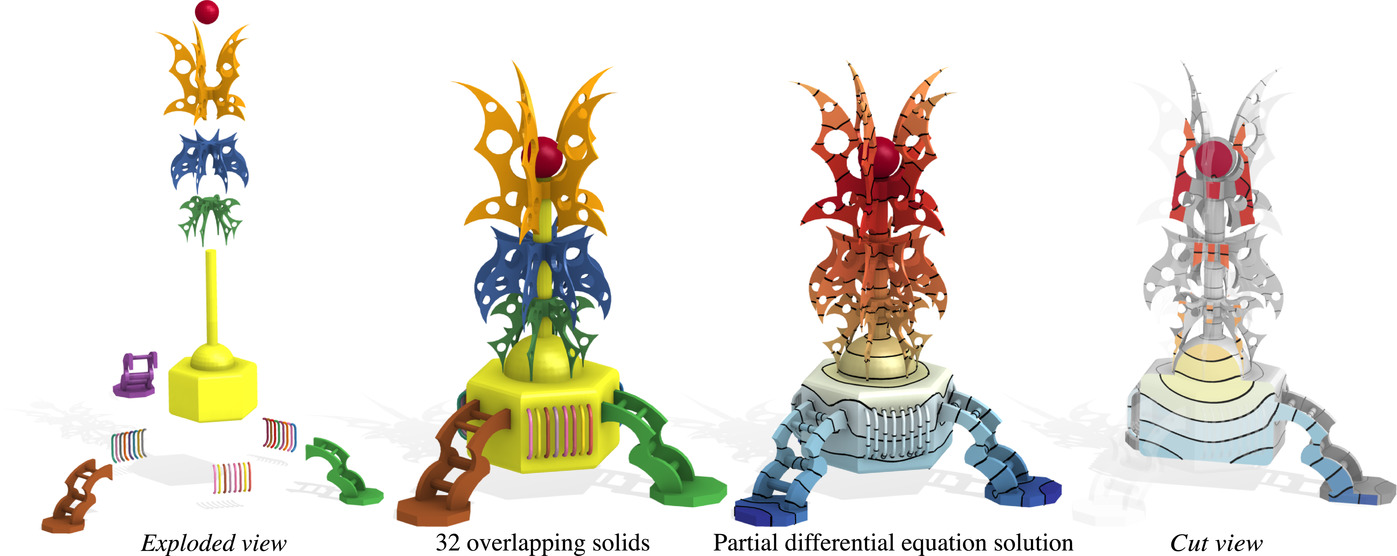
Many tasks in geometry processing are modelled as variational problems solved numerically using the finite element method. For solid shapes, this requires a volumetric discretization, such as a boundary conforming tetrahedral mesh. Unfortunately, tetrahedral meshing remains an open challenge and existing methods either struggle to conform to complex boundary surfaces or require manual intervention to prevent failure. Rather than create a single volumetric mesh for the entire shape, we advocate for solid geometry processing on deconstructed domains, where a large and complex shape is composed of overlapping solid subdomains. As each smaller and simpler part is now easier to tetrahedralize, the question becomes how to account for overlaps during problem modelling and how to couple solutions on each subdomain together algebraically. We explore how and why previous coupling methods fail, and propose a method that couples solid domains only along their boundary surfaces. We demonstrate the superiority of this method through empirical convergence tests and qualitative applications to solid geometry processing on a variety of popular second-order and fourth-order partial differential equations.
Selective Padding for Polycube-Based Hexahedral Meshing
- Pages: 580-591
- First Published: 03 January 2019
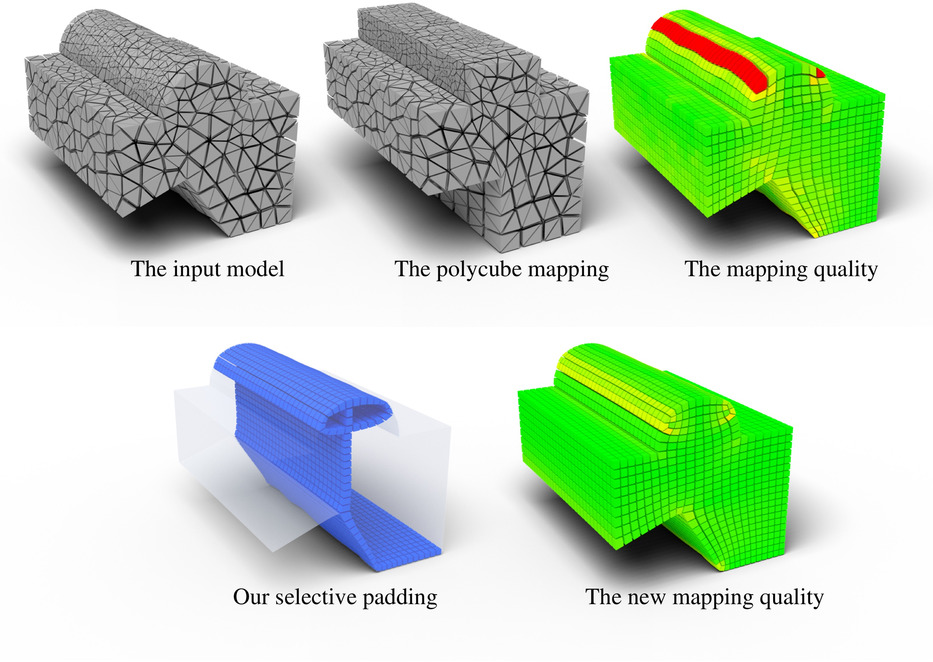
Hexahedral meshes generated from polycube mapping often exhibit a low number of singularities but also poor-quality elements located near the surface. It is thus necessary to improve the overall mesh quality, in terms of the minimum scaled Jacobian (MSJ) or average SJ (ASJ). Improving the quality may be obtained via global padding (or pillowing), which pushes the singularities inside by adding an extra layer of hexahedra on the entire domain boundary. Such a global padding operation suffers from a large increase of complexity, with unnecessary hexahedra added. In addition, the quality of elements near the boundary may decrease. We propose a novel optimization method which inserts sheets of hexahedra so as to perform selective padding, where it is most needed for improving the mesh quality.
Increasing the Spatial Resolution of BTF Measurement with Scheimpflug Imaging
- Pages: 592-609
- First Published: 04 January 2019
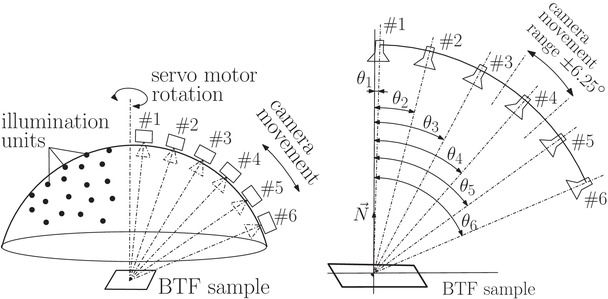
Graphical Abstract: We present an improved way of acquiring spatially varying surface reflectance represented by a bidirectional texture function (BTF). Planar BTF samples are measured as images at several inclination angles which puts constraints on the minimum depth of field of cameras used in the measurement instrument. For standard perspective imaging, we show that the size of a sample measured and the achievable spatial resolution are strongly interdependent and limited by diffraction at the lens' aperture. We provide a formula for this relationship. We overcome the issue of the required depth of field by using Scheimpflug imaging further enhanced by an anamorphic attachment. The proposed optics doubles the spatial resolution of images compared to standard perspective imaging optics. We built an instrument prototype with the proposed optics that is portable and allows for measurement on site. We show rendered images using the visual appearance measured by the instrument prototype.
A Survey of Information Visualization Books
- Pages: 610-646
- First Published: 16 January 2019
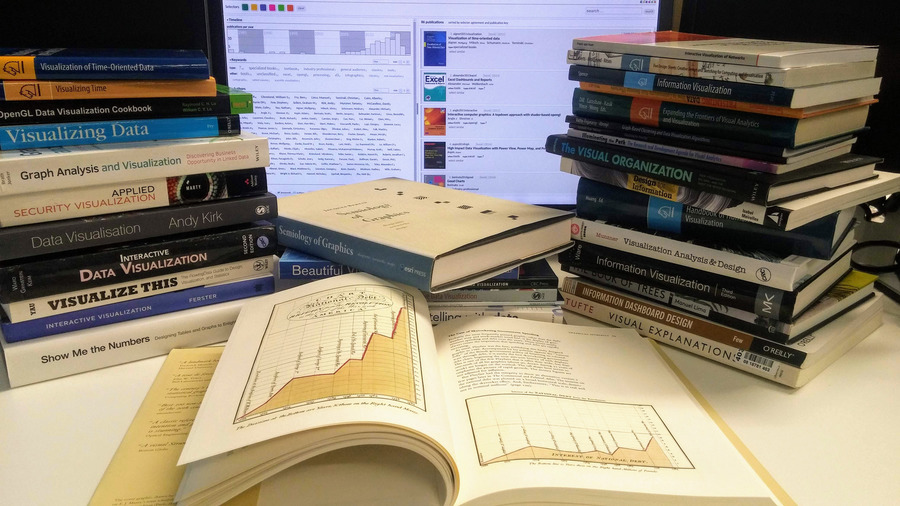
We present the first literature survey of information visualization books, providing a resource to both experienced researchers and newcomers in the data visualization discipline. This paper features a novel two-level classification based on both books and chapter topics examined in each book, enabling the reader to quickly identify to what depth a topic of interest is covered within a book. Readers can use this survey to identify the most relevant book for their needs amongst a quickly expanding collection.
MyEvents: A Personal Visual Analytics Approach for Mining Key Events and Knowledge Discovery in Support of Personal Reminiscence
- Pages: 647-662
- First Published: 05 January 2019

Reminiscence is an important aspect in our life. It preserves precious memories, allows us to form our own identities and encourages us to accept the past. Our work takes the advantage of modern sensor technologies to support reminiscence, enabling self-monitoring of personal activities and individual movement in space and time on a daily basis. This paper presents MyEvents, a web-based personal visual analytics platform designed for non-computing experts, that allows for the collection of long-term location and movement data and the generation of event mementos. Our research is focused on two prominent goals in event reminiscence: (1) selection subjectivity and human involvement in the process of self-knowledge discovery and memento creation; and (2) the enhancement of event familiarity by presenting target events and their related information for optimal memory recall and reminiscence. A novel multi-significance event ranking model is proposed to determine significant events in the personal history according to user preferences for event category, frequency and regularity. The evaluation results show that MyEvents effectively fulfils the reminiscence goals and tasks.
Filtered Quadrics for High-Speed Geometry Smoothing and Clustering
- Pages: 663-677
- First Published: 12 February 2019
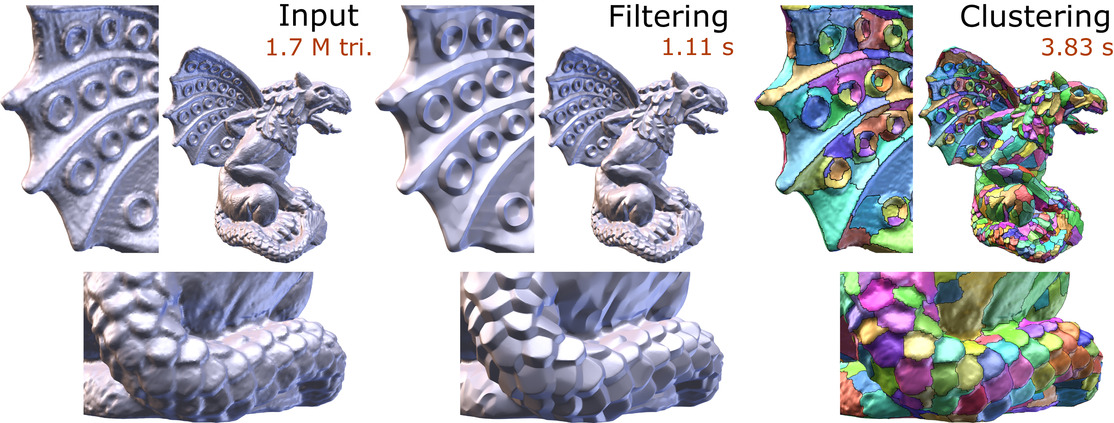
Modern 3D capture pipelines produce dense surface meshes at high speed, which challenge geometric operators to process such massive data on-the-fly. In particular, aiming at instantaneous feature-preserving smoothing and clustering disqualifies global variational optimizers and one usually relies on high-performance parallel kernels based on simple measures performed on the positions and normal vectors associated with the surface vertices. Although these operators are effective on small supports, they fail at properly capturing larger scale surface structures. To cope with this problem, we propose to enrich the surface representation with filtered quadrics, a compact and discriminating range space to guide processing. Compared to normal-based approaches, this additional vertex attribute significantly improves feature preservation for fast bilateral filtering and mode-seeking clustering, while exhibiting a linear memory cost in the number of vertices and retaining the simplicity of convolutional filters.
Functional Maps Representation On Product Manifolds
- Pages: 678-689
- First Published: 21 January 2019

We consider the tasks of representing, analysing and manipulating maps between shapes. We model maps as densities over the product manifold of the input shapes; these densities can be treated as scalar functions and therefore are manipulable using the language of signal processing on manifolds. Being a manifold itself, the product space endows the set of maps with a geometry of its own, which we exploit to define map operations in the spectral domain; we also derive relationships with other existing representations (soft maps and functional maps). To apply these ideas in practice, we discretize product manifolds and their Laplace–Beltrami operators, and we introduce localized spectral analysis of the product manifold as a novel tool for map processing. Our framework applies to maps defined between and across 2D and 3D shapes without requiring special adjustment, and it can be implemented efficiently with simple operations on sparse matrices.
This article has been retracted and is available online only
Retracted: Unified Framework for Efficient and Enriched Water Animation with Surface and Wave Foams
- Page: 690
- First Published: 28 June 2018




